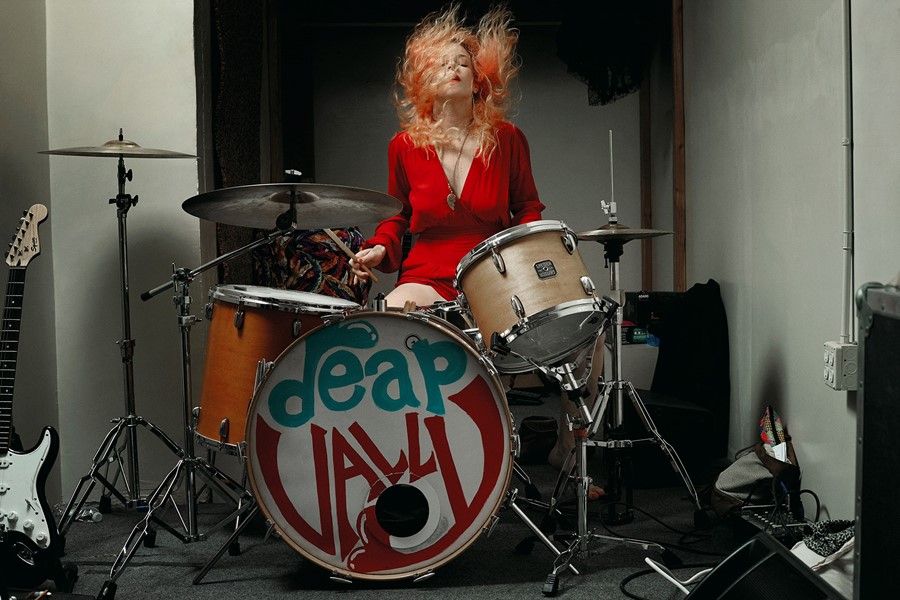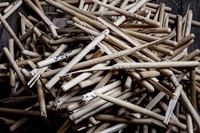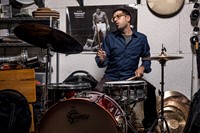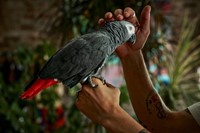Irish photographer Deirdre O’Callaghan talks capturing some of the world’s most influential percussionists at play for her latest project, The Drum Thing
Photographer Deirdre O’Callaghan has been music-obsessed since her childhood in Cork, where her house reverberated with everything from Irish folk songs to hip-hop to Rachmaninoff, reflecting her and her family’s diverse musical tastes. But while she is indiscriminate in her appreciation of multiple genres, one thing attracts her to a song above all else all: the rhythm section, and in particular the drums. “Drumming is its own language,” she explains over the phone from her home in LA, “I love watching drummers perform. I’m very drawn to that type of person – someone who chooses to sit at the back, yet they’re the driving force.”
Years ago, O’Callaghan had had the idea of shooting a series of portraits of iconic drummers, but it wasn’t until 2011, over dinner with her friends Sarah Lowe and Jim Sclavunos, the drummer for Nick Cave and the Bad Seeds, that the concept began to take shape. “We started off just chatting about it and by the end of the night we’d drawn up a list of dream names,” she says. This list provided the springboard for a project that would go on to occupy the next five years of the image-maker’s life, taking her from New York to Nashville to London, Louisiana and back. “Initially I pitched it as a magazine feature and picked ten drummers to focus on,” she laughs, “but I research the ass off my projects, and once I started researching and shooting people, I began to realise that it could become a book.” 98 portrait sessions and a publishing deal later and that’s just what it has emerged as: an enthralling new publication titled The Drum Thing.
The book is a who’s who of the drumming world over the past 60 years, spanning jazz, blues, rock, hip-hop, punk and more, and taking us inside the homes and studios of such legendary artists as Ringo Starr, Dave Grohl, Jack White, Jack DeJohnette and Bobbye Hall. In the comfort of their personal spaces, and with the warm and enthusiastic O’Callaghan to put them at ease, these rhythmic veterans soon began to divulge some of the remarkable stories from their trailblazing pasts, giving the photographer another bright idea: to interview each drummer as well. The resulting texts, alongside O’Callaghan’s candid photographs of the players both behind and away from their kits, still lifes of their possessions and evocative landscape shots of their chosen surroundings, serve to paint extremely vivid portraits of each musical hero and their unique traits.
“It’s all about touch, it’s not about pounding,” says John Densmore of The Doors, who delicately raises both hands like a conductor in a trance in the wonderfully complementary shot that accompanies the quote. “Either you got it or you don’t,” remarks revered session drummer James Gadson, who stands stern and immaculately suited in a photograph on the page opposite the interview, while in another close-up positioned above it he cracks a wicked, mustachioed grin that lets us know just where he lies on that spectrum. Just as Dave Grohl describes being a good drummer as “being able to get your personality, your sense of humour and your passion, or whatever it is, your voice, out of you, through your hands and into this instrument,” so O’Callaghan channels the spirit of these extraordinary talents through her lens and onto the page. Here, in celebration of the book’s release, we sit down with the skilled photographer to discuss some of her favourite memories from its realisation, and the magical moment when she brought many of the drumming legends together under one roof.
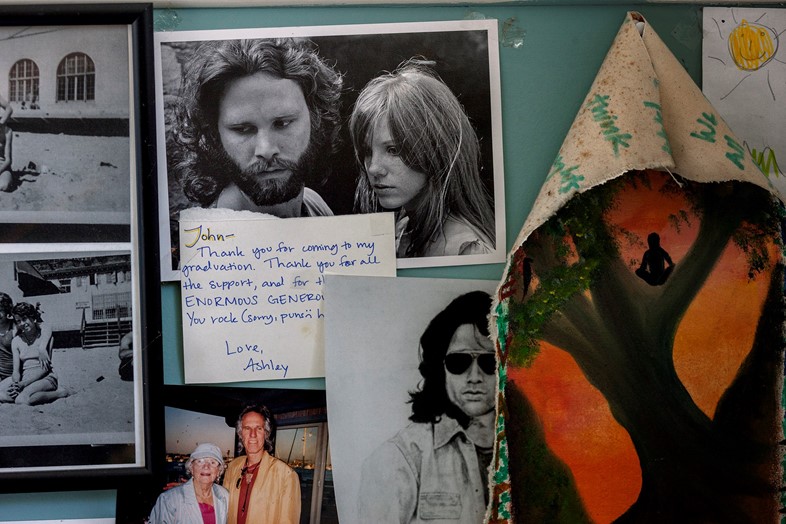
On her journey into photography…
“In my 20s I assisted different photographers and worked in various places – printing labs and so on – but the big turning point for me was when I met and became friends with Rankin. It was when he and Jefferson were still at college, and I got involved in Dazed & Confused at the very start of the magazine, which was such an amazing time. I worked on the picture desk there for years but I was also very much involved in the music side of things too – helping to choose what music was featured. It was the most exciting thing in the world for me because it combined my two passions. After that I became a freelance photographer, which I’ve been doing for 17 years.”
On the book’s evolution...
“Visually I love watching a drummer perform; at gigs I always find myself drawn to watching the drummer and I just felt that as a photographer to capture that would be really interesting. It’s funny because originally my plan was to focus on the drummers behind their drums – capturing their playing style and the setup of their kits – but then I realised if I’m going to do a whole book, there’s only so many ways I can shoot like this and make it interesting. That’s when I really opened it up and started shooting the still lifes and the portrait shots and photographing outside; that made it far more interesting. That’s why it’s really important to spend time on projects. I always do and then they really develop and evolve.”
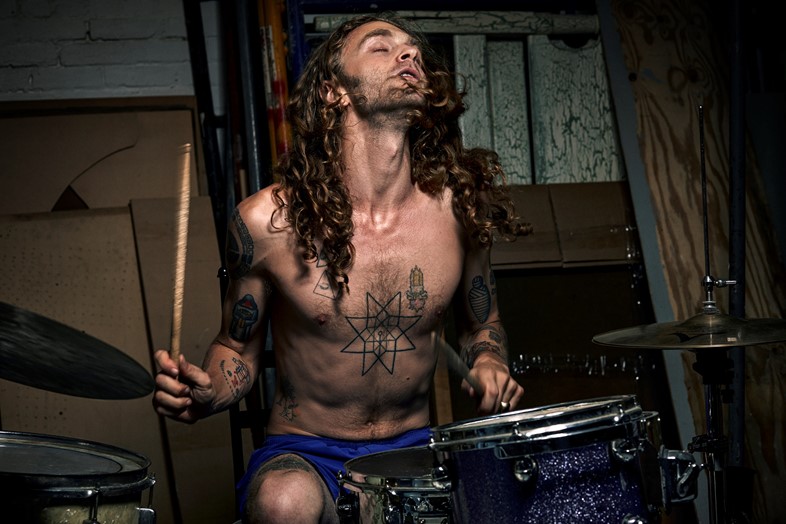
On knowing when she’d reached the end...
“It’s very hard to know but I just knew; I don’t know how to describe it! I was at 98 drummers when I stopped and by the end there was a whole thread connecting a lot of the people featured and it sort of came full circle. What was really lovely was that in the last year and a half it became a bit like a jigsaw: if I went back somewhere I’d often go and shoot more details and start piecing together the design in my head. I had photographed Jack White at Third Man Records, for example, and he talked in the interview about the sound of trains in the background there – how he loved it. So when I went back to Nashville to shoot Patrick Carney, the drummer from The Black Keys, I remembered Jack’s story and I went and found the train track and did this beautiful photograph of it at night. In the layout, there’s the shot of Jack playing and on the next page is the shot of the track.”
On some of her most special memories from the project...
“Meeting George Hurley from Minutemen was so special. Minutemen have had this massive effect on so many bands, from the Red Hot Chili Peppers to Jon Theodore from Queens of the Stone Age, and George is just this gorgeous, humble, lovely man. He doesn’t play anymore. He lives in San Pedro, where Minutemen started, and hearing his story about their early days, how they toured through the south and really blazed a trail for so many other bands, was just incredible. And then when I photographed Mark Guiliana, about three years ago, I went to see his band play the following day and it was really lovely getting the chance to follow up and go to a gig. Mark’s a very interesting, phenomenal player who also played on David Bowie’s last album.”
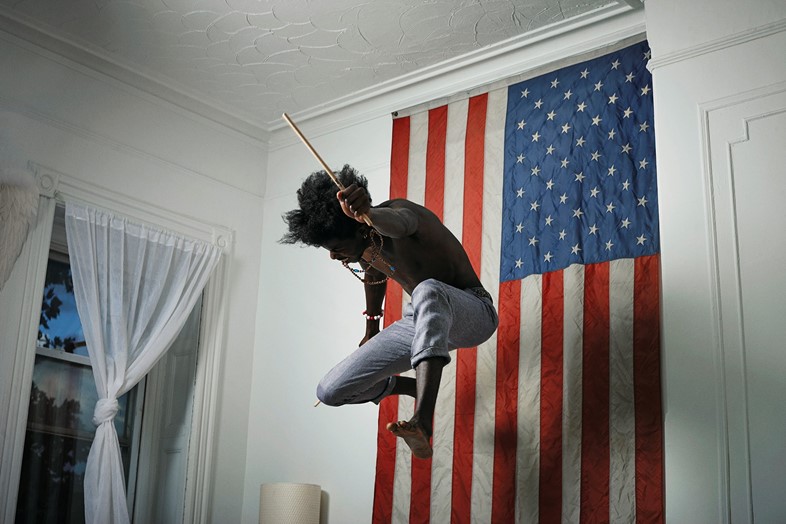
On her favourite images from the book...
“I have so many but one of my favourites is the shot of Tyshawn Sorey. I normally have an assistant with me but that day it was just me and him. We’d just done the interview, which was a beautiful interview, and it was one of those in-between moments where I turned around, saw him doing his thing, captured it and knew I had ‘the shot’.
“I also love the photo of Jack DeJohnette. We’d gone to his place upstate and we were going to shoot in his basement, which is where the kit was, but when we came upstairs the sun was just going down and I was like, ‘Hang on a second, why are we shooting down there? Look at this!’ So Jack goes over and starts playing the piano and I was pinching myself going, ‘Oh my god, we’re here – there were just a few of us in the room – and Jack DeJohnette is playing the piano to us.’ That was so magical!”
On bringing the drummers together...
“We did a book launch here in LA at Swing House Studios, which was brilliant. We had two vintage drum kits set up and there was a drum-off between James Gadson and Jim Keltner, and then Bobbye Hall played the bongos – she’s a legend, she’s played with everyone from Pink Floyd to The Doors to The Rolling Stones – and DJ Cut Chemist played at the end. But I think the best thing about it was seeing people finally meeting each other. When I was working on the project I kept saying [to whoever I was shooting], ‘You should meet this person. Why don’t you hook up with them?’ and all these incredible drummers were getting really excited about other drummers in the book and asking me what they were like. Back at the original dinner I had with Jim Sclavunos, for example, he had told me how important John French from Captain Beefheart was to him and to his decision to become a drummer, and then at the launch there they were, up on stage for this panel discussion: Jim telling John French how much he had inspired him. Having that evening honoring the drummers and hearing their stories and seeing them together was just amazing.”
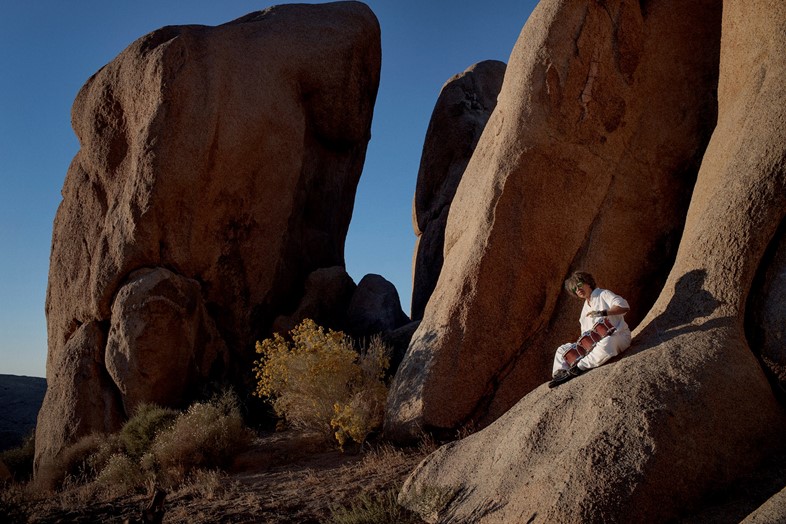
The Drum Thing by Deirdre O’Callaghan is out now, published by Prestel.
